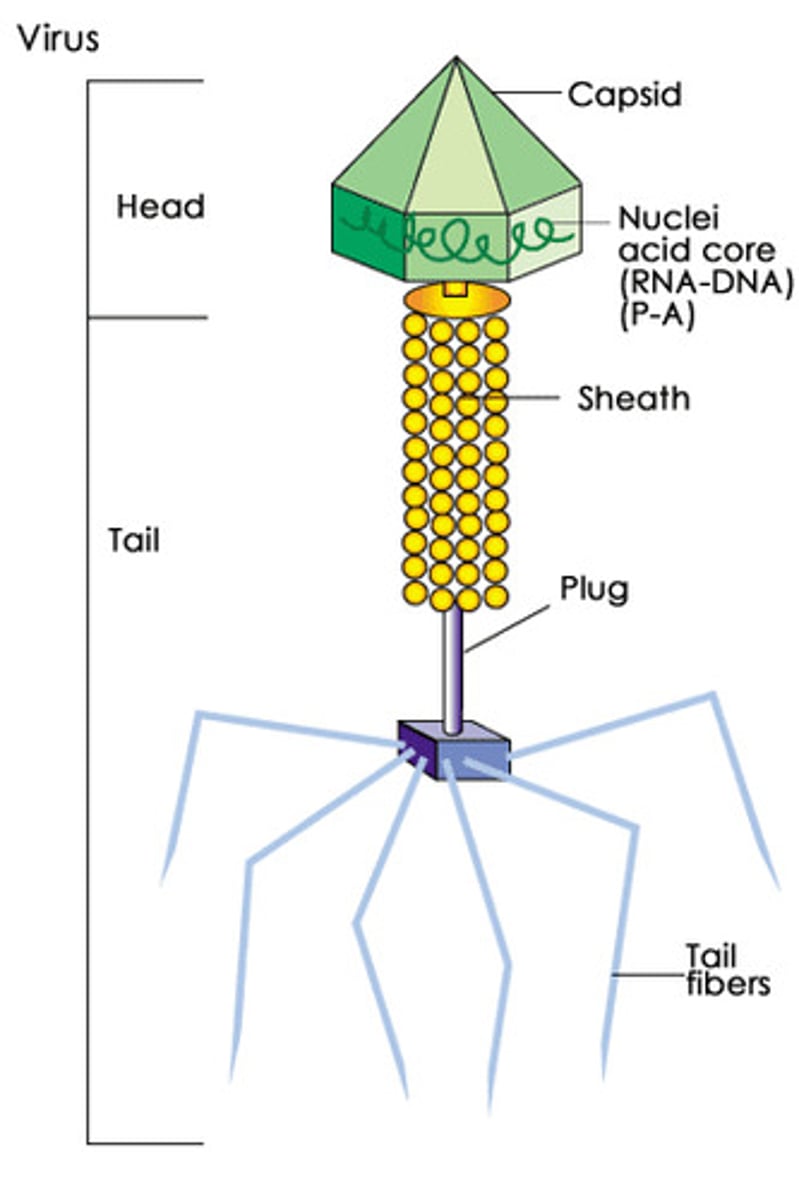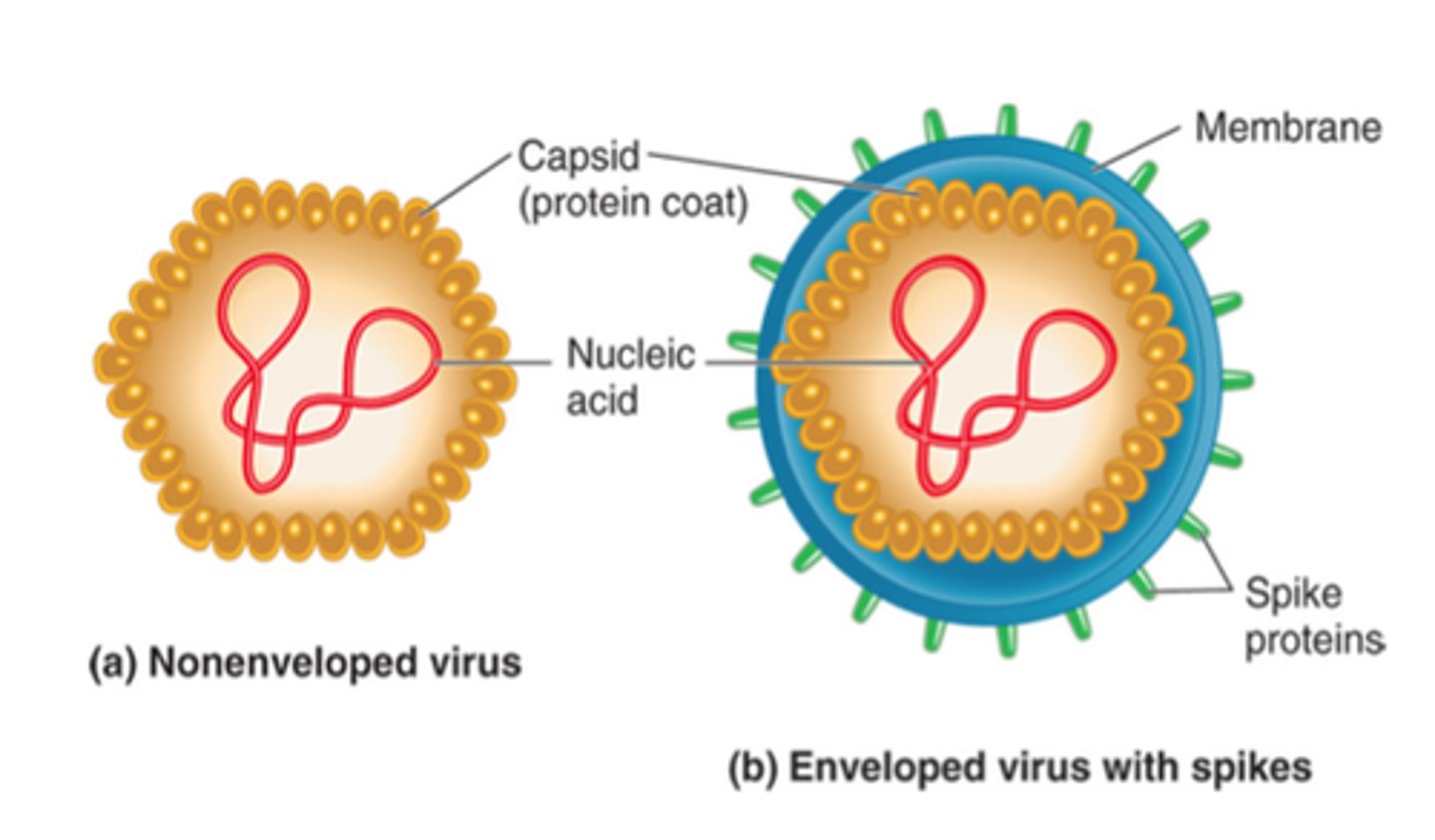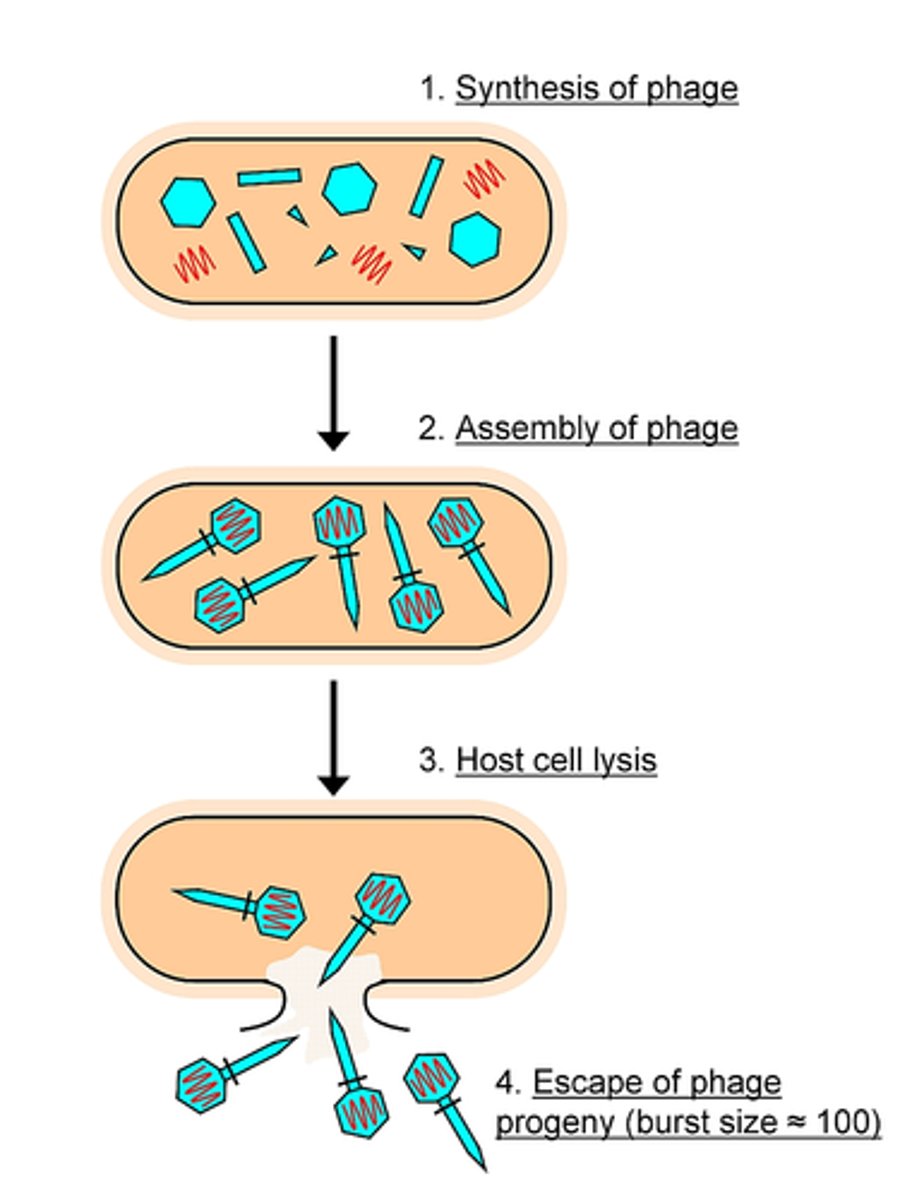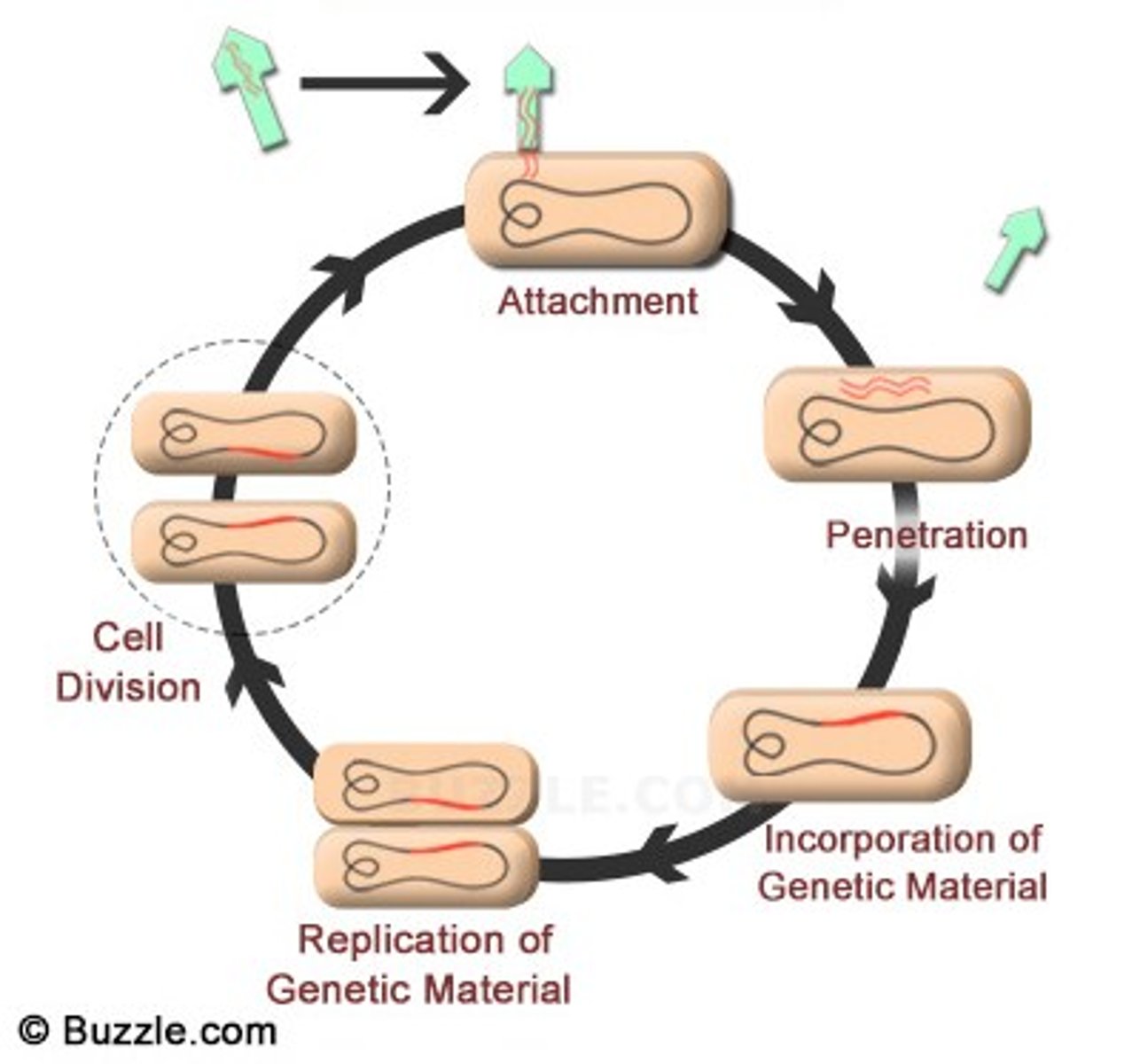BIOL 1407 - Viruses
1/21
There's no tags or description
Looks like no tags are added yet.
Name | Mastery | Learn | Test | Matching | Spaced |
|---|
No study sessions yet.
22 Terms
virus characteristics
composed of DNA or RNA enclosed in a protein and sometimes a lipid bilayer, no organelles, do not metabolize, cannot reproduce on own

virus envelope
Surrounds the capsid
Helps the virus enter the cell
Includes glycoproteins

four virus shapes
filamentous, icosahedral, enveloped, head and tail

virus core
The center of the virus, consisting of nucleic acid, either DNA or RNA but not both, may be single or double stranded, circular or linear, one piece or segmented
positive sense
describes the genome of an RNA virus containing RNA that serves directly as the transcript for viral protein production
negative sense
describes the genome of a virus in which the genome is not directly transcribed
RNA viruses
Use an RNA-dependent RNA-polymerase to transcribe their mRNA, enzyme makes more errors, RNA viruses mutate more frequently
baltimore classification
based on morphology, genetics, and production of mRNA to classify viruses
Steps of viral infection
attachment, entry, replication, assembly, egress (release)
attachment of virus
-involves very specific binding between virion's attachment proteins and receptors on host's cell surface, virus capsid proteins or envelope glycoproteins
- receptors on host are actually there for some other function, but virus co-opts them
-virus evolves to fit host's receptors
-virus species specific or even cell type specific
Entry of virus
bacteriophage enters host cell naked
eukaryotic viruses enter by endocytosis or fusion with cell membrane if enveloped
Replication and assembly of virus
depends on viral genome, DNA genome transcribes mRNA then duplicates DNA, RNA genome makes complementary RNA to transcribe then copies RNA, RNA retrovirus uses reverse transcriptase to transcribe DNA from RNA then DNA incroporates into host genome and directs synthesis
Modes of egress (release)
lysis-results in death of host cell
budding-uses cell membrane resulting in enveloped virions
exocytosis-virions leave in vesicles
bacteriophages
Viruses that specifically infect bacteria.
Regressive hypothesis
Viruses are cells that lost some of the replicative and metabolic traits over time
progressive hypothesis
viruses originated from genetic material that gained the ability to replicate and be transmitted semi-autonomously, ex: retrovirus
Virus first hypothesis
states that viruses predate cellular hosts. Viruses originated in a precellular world and were the first self-replicating entities
Prions
very small, contain no nucleic acids, cause fatal neurodegenerative disease (mad cow disease), not destoyed by cooking
Viriods
only known to infect plants, can replicate in cell, do not manufacture any proteins, can cause crop failure
obelisks
small circles of RNA, only known from sequence data, found on microbiome genomes, affects unknown
lytic cycle
the virus rapidly replicates, destroying the host cell in the process (lysis) to release new virus particles.

lysogenic cycle
in the lysogenic cycle, the viral DNA integrates into the host's genome, becoming a prophage, and replicates along with the host cell without immediately destroying it
